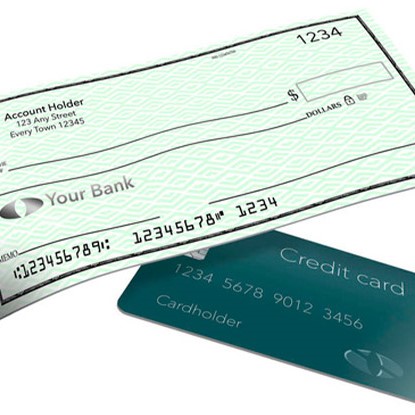Demystifying Routing Numbers:
A Comprehensive Guide
to Banking Essentials


Discover a smarter way to handle routing numbers, reduce compliance risks, and boost productivity. Our cutting-edge solution simplifies the complex, so you can focus on what matters most – growing your business. Choose docAlpha today and experience the benefits of efficient, accurate, and secure routing number management. Your financial operations deserve the best, and docAlpha delivers it effortlessly.
If you’re new to banking, you might have heard of routing numbers but don’t quite know what they are and why they matter. Don’t worry – you’re not alone! In this guide, we will delve into everything you need to know about routing numbers – how they work, what they’re used for, and how to find them. By the end of this guide, you’ll have a better understanding of routing numbers and why they’re important for your financial transactions.

Choose docAlpha for a streamlined and efficient process that saves time, reduces errors, and ensures accurate routing number handling. Experience financial operations at their best – hassle-free and error-free.
Routing numbers are an integral part of the U.S. banking system, and they play a crucial role in ensuring the smooth and accurate processing of financial transactions. Here’s how routing numbers work.
Each bank or credit union in the United States is assigned a unique nine-digit routing number by the American Bankers Association (ABA). This number is used to identify the institution.
The routing number is typically printed on personal checks, usually located at the bottom left corner. It’s followed by the account number and check number. This placement allows the routing number to be easily accessible for various transactions.
When you set up direct deposit for your salary, pension, or government benefits, you provide your bank’s routing number along with your account number. Your employer or the government agency uses this information to route your payments directly to your account.
RELATED: Benefits of Invoice Automation
For wire transfers, both domestic and international, the routing number is essential. It ensures that funds are directed to the correct financial institution and account. Banks use routing numbers to verify the recipient’s bank and account before processing the transfer.
Routing numbers are used for various electronic payments, including bill payments and online transfers. When you authorize electronic payments, you may be asked to provide your bank’s routing number to ensure the money goes to the right place.
Automated Clearing House (ACH) transactions, such as recurring bill payments and electronic fund transfers, rely on routing numbers to identify the originating and receiving banks. The routing number ensures that the funds are properly transferred between accounts.
In interbank transactions, where one bank deals with another for various financial services, routing numbers are used to determine which bank is involved in the transaction and where the funds should be routed.
Routing numbers also serve as a means of verifying the legitimacy of bank accounts. They help confirm that the account is associated with a valid financial institution.
In summary, routing numbers work as a critical part of the infrastructure that enables accurate and secure financial transactions in the United States. They ensure that funds are directed to the correct bank or credit union and the intended recipient’s account, contributing to the efficiency and reliability of the banking system.
Elevate your payment processing with ArtsylPay’s cutting-edge electronic fund transfer platform. Experience faster, more accurate, and secure payment transactions. Make the smart move to ArtsylPay today!
Book a demo now
First and foremost, let’s define what routing numbers are. A routing number, also known as an ABA routing number, is a unique nine-digit number that identifies the financial institution responsible for a transaction.
Routing numbers are assigned by the American Bankers Association (ABA) and used by Federal Reserve Banks to process Fedwire funds transfers, automated clearinghouse (ACH) transfers, and direct deposits.
In essence, routing numbers serve as an address that lets banks know where the funds should be sent or received.
Each bank or credit union has its own routing number, but it’s important to note that not all banks have just one routing number. Some financial institutions may have multiple routing numbers depending on the location, type of transaction, or even the account.
In addition, some banks use different routing numbers for wire transfers and ACH transactions, so it’s important to double-check which routing number to use for which transaction.

«Routing number vs. account number» is a common point of confusion, but they serve distinct purposes in banking:
In summary, the routing number directs transactions to the correct financial institution, while the account number identifies your specific account within that institution. Together, they ensure that money is deposited into or withdrawn from the correct account at the right bank.
RELATED: Top 10 Accounts Payable Processes to Automate | Artsyl
An ABA routing number, also known as an American Bankers Association routing number or ABA number, is a unique nine-digit code used to identify financial institutions, such as banks and credit unions, in the United States. Here’s what you need to know about ABA routing numbers:
Overall, the ABA routing number is a fundamental component of the U.S. banking system, ensuring the accuracy and security of financial transactions between institutions and customers. It’s essential to know your bank’s routing number when conducting various banking activities.
Elevate your data accuracy game with docAlpha. Our intelligent platform not only manages routing numbers effortlessly but also validates and cross-references them with precision. Ensure that your financial data is error-free and reliable, providing a strong foundation for
your business decisions.
Book a demo now
So why do routing numbers matter? One of the main reasons is that they ensure that the money you send or receive goes to the right account.
Routing numbers also help to expedite transactions and reduce errors, making the process smoother and more efficient. It’s crucial to provide the correct routing number when setting up direct deposits, making payments, or transferring funds as errors can result in delays or even lost money.
In addition to personal banking, businesses also use routing numbers for payroll and vendor payments. It’s important for business owners to provide the correct routing number to their bank and payroll provider to ensure timely and accurate payments.
Similarly, vendors may require the routing number to set up electronic payments or wire transfers.
Finding your routing number is easy and can be done in a few ways. One way to find your routing number is to look at the bottom left corner of your personal or business checks.
The routing number will be the first set of digits, before the account number and check number. If you don’t have any checks handy, you can also log in to your online banking account and check your account information or contact your bank’s customer service for assistance.

It’s important to note that routing numbers should never be shared with anyone else as they could potentially access your account and funds.
Online banking and routing numbers are closely related, as routing numbers play a significant role in various online banking activities. Here’s how online banking and routing numbers are interconnected:
Account Linking: When you set up online banking for your bank account, you typically need to provide your bank’s routing number along with your account number. This information allows you to link your account to the online banking platform.
Direct Deposits: Online banking enables you to receive direct deposits for your salary, government benefits, or other income sources. Your employer or the issuing agency uses your bank’s routing number and your account number to route the payments directly to your account.
Bill Payments: Online banking allows you to pay bills electronically. When you initiate bill payments, you provide the payee’s banking information, including their routing number and account number. This ensures that your payments are accurately routed to the recipient’s account.
Transfers: Online banking platforms often allow you to transfer funds between your accounts at the same bank or to accounts at other financial institutions. When performing these transfers, the routing number is used to identify the destination bank.
External Transfers: Some online banking services offer external transfer capabilities, enabling you to move money between your accounts at different banks. In these cases, the routing numbers of both banks are required to facilitate the transfer.
Wire Transfers: If you need to initiate a wire transfer online, you’ll need the recipient’s bank’s routing number to ensure the funds are directed to the correct institution. Online banking platforms typically provide fields for entering this information.
RELATED: Intelligent Sales Order Automation for Smarter Sales
Account Verification: Online banking systems may use routing numbers to verify the authenticity of external bank accounts. When you link an external account to your online banking profile, the routing number helps confirm the legitimacy of the account.
Transaction History: Online banking platforms display transaction details, including the routing numbers of the involved banks, in your account activity history. This allows you to track the flow of funds in and out of your account.
In essence, routing numbers are a fundamental component of online banking, enabling the secure and efficient processing of various financial transactions. Whether you’re receiving payments, making payments, or transferring funds, routing numbers ensure that the right financial institutions are involved in the transaction, contributing to the convenience and accuracy of online banking.
Empower your finance team to streamline financial workflows with ArtsylPay. Our platform simplifies routing number management, ensuring data accuracy and compliance. Boost efficiency, reduce operational costs, and enhance your financial processes. Revolutionize your business operations with ArtsylPay now!
Book a demo now
The routing number format in the United States consists of nine digits and is typically presented as a unique identifier for each bank or credit union. The format is structured to provide specific information: the first two digits represent the Federal Reserve District, the next two digits indicate the Federal Reserve Bank, and the final five digits identify the individual financial institution.
When setting up direct deposit for your salary, retirement benefits, or other regular income, you’ll need your bank’s routing number. This nine-digit code ensures that your payments are securely and accurately routed to your bank account. Providing your routing number to your employer or payment issuer streamlines the process of receiving funds directly into your account.
For both domestic and international wire transfers, the routing number plays a crucial role. In domestic wire transfers, it directs funds to the recipient’s bank. For international transfers, a combination of the routing number and SWIFT/BIC code helps ensure that funds reach the correct financial institution and account. Accurate routing numbers are vital to the efficient and secure transfer of funds.
Routing numbers are essential for various electronic payment methods, such as online bill payments, ACH transactions, and electronic fund transfers. These numbers facilitate the seamless movement of funds between bank accounts, making it possible to pay bills, transfer money, and conduct financial transactions electronically with confidence.
When sending or receiving funds internationally, additional information, such as the SWIFT/BIC code and an intermediary bank’s routing number, may be required in conjunction with the recipient’s bank’s routing number.
These details ensure that funds cross borders accurately and reach the intended international destination. Properly configured routing numbers help avoid delays and errors in international transfers.
Routing numbers may seem like a small detail in the banking world, but they play a crucial role in ensuring that financial transactions are processed accurately and efficiently. Knowing your routing number and double-checking it before making a payment or transfer can save you time and money in the long run. If you’re unsure or have any questions about routing numbers, don’t hesitate to contact your bank’s customer service for assistance.
Trust docAlpha to handle routing numbers securely and in compliance with industry standards. Protect sensitive financial information while ensuring that your routing numbers are up to date and valid. Our platform is designed to safeguard your data and maintain compliance at all times.
Book a demo now
A routing number is a unique nine-digit code assigned to financial institutions in the United States. It’s crucial for identifying banks and credit unions, ensuring accurate and secure routing of funds for various transactions, including direct deposits, bill payments, and wire transfers.
You can typically find your bank’s routing number on your personal checks. It’s often printed on the bottom left corner, along with your account number and check number. You can also contact your bank or check their website for this information.
Routing numbers are primarily used for domestic transactions within the United States. For international transfers, additional information, such as a SWIFT/BIC code and intermediary bank details, is required to ensure funds are directed correctly.
No, each financial institution has its own unique routing number. While the format typically consists of nine digits, the combination varies from one bank or credit union to another, allowing for individual identification.
A routing number identifies the bank or credit union, while an account number identifies a specific account within that institution. Together, they ensure that funds are routed to the correct bank and account.
No, you cannot change your bank’s routing number. Routing numbers are assigned by the American Bankers Association (ABA) to financial institutions and remain constant for the institution’s lifetime.

Yes, routing numbers are safe to share for legitimate financial transactions. They are used to route funds accurately to your bank and account. However, be cautious and only provide your routing number to trusted entities for authorized transactions.
In some cases, banks may use the same routing number for both checking and savings accounts. However, it’s essential to verify with your bank, as some institutions may have separate routing numbers for different account types.
Routing numbers are primarily used for directing funds, not for tracking transactions. To monitor your account activity, you should refer to your bank’s online banking platform or account statements.
Providing an incorrect routing number can result in delays or errors in processing your transaction. It’s crucial to double-check and verify the routing number before initiating any financial transactions to ensure accuracy.
Give your financial team the tools they need to excel. With docAlpha, your team can focus on strategic tasks rather than repetitive data entry. Unlock their potential, boost productivity, and elevate your financial operations to new heights. Let docAlpha be your financial team’s secret weapon for routing number management.
Book a demo now